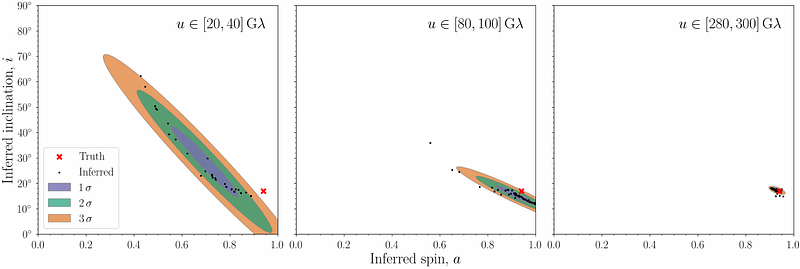Inferring Black Hole Spin from Interferometric Measurements of the First Photon Ring: A Geometric Approach

Inferring Black Hole Spin from Interferometric Measurements of the First Photon Ring: A Geometric Approach
Lennox S. Keeble, Alejandro Cárdenas-Avendaño, Daniel C. M. Palumbo
AbstractAccurately inferring black hole spin is crucial for understanding black hole dynamics and their astrophysical environments. In this work, we outline a geometric method for spin estimation by using the interferometric shape of the first photon ring ($n=1$) as an approximation to the critical curve, which, given an assumed value of the black hole inclination, is then mapped to a spin value. While future space-based missions will capture a wealth of data on the first photon ring--including the full angle-dependent diameter, angular brightness profile, and astrometric offset from the $n=0$ ring--our analysis is restricted to using only two angle-dependent diameters to compute its shape asymmetry and infer spin. Focusing on low inclinations and moderate-to-high spins, we test the method across various emission models, baselines, and noise sources, including a mock space-based observation. Although the size of the $n=1$ ring depends on the emission model, its interferometric shape remains a robust spin probe at low inclinations. We find that the inferred asymmetry of the $n=1$ image may be biased by the critical curve morphology, and it can be heavily skewed by the presence of noise, whether astrophysical or instrumental. In low-noise limits at low viewing inclination, significant contributions from the n=0 image at short baselines may lead to a downward bias in asymmetry estimates. While our method can estimate high spins in noise-free time-averaged images, increasing the noise and astrophysical variability degrades the resulting constraints, providing only lower bounds on the spin when applied to synthetic observed data. Remarkably, even using only the ring's asymmetry, we can establish lower bounds on the spin, underscoring the promise of photon ring-based spin inference in future space-based very long baseline interferometry (VLBI) missions, such as the proposed Black Hole Explorer (BHEX).